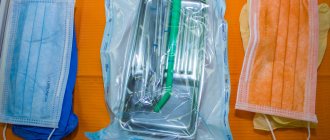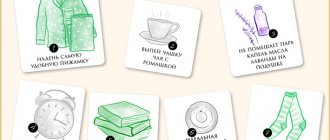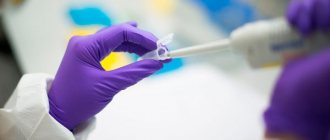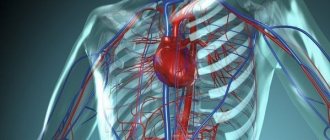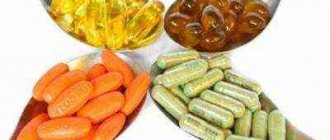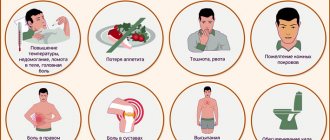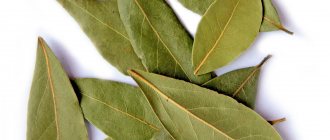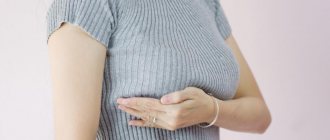- October 14, 2018
- Diseases and conditions
- Gladkikh Asya
In the article we will consider the treatment of cerebral encephalopathy with folk remedies.
This is a disease in which, due to insufficient supply of blood and oxygen to the tissues of this organ, its cells die. As a result, zones of decay appear, blood stagnation is observed, local areas of hemorrhage are formed and swelling of the meninges is formed. The disease mainly affects the gray and white matter.
Encephalopathy is not an independent disease, but one that occurs against the background of other pathological processes. It can be found in different age categories: adults and children. Its course is chronic and undulating. Sometimes the exacerbation phase is replaced by temporary improvements in the condition, but the prognosis of this disease is disappointing: it is incurable, although many patients live long enough if they follow the medication regimen, systematically monitor blood pressure indicators and use folk remedies for prevention, which significantly reduces the negative consequences of the disease. Symptoms and treatment of cerebral encephalopathy are interrelated.
Factors in the development of encephalopathy
The development of the pathological process is unhurried, however, there are exceptions. For example, with severe damage to the liver and kidneys, as well as with the occurrence of malignant hypertension, the disease progresses rapidly and suddenly. Currently, the classification of encephalopathies is based on the causes of their occurrence:
- Perinatal (congenital) encephalopathy, the causes of which are genetic changes in the metabolic process, infectious diseases during pregnancy, umbilical cord entanglement, and birth injuries.
- Dyscirculatory (acquired) - develops with lesions of the membranes of the brain of a non-inflammatory nature, causes circulatory failure in the brain in the presence of pathologies of the vascular system and is divided into venous, atherosclerotic, mixed and hypertensive encephalopathy. Treatment of dyscirculatory encephalopathy of the brain with folk remedies can be quite effective.
- Vascular progressive leukoencephalopathy, the cause of which is damage to the blood vessels of the brain and impaired microcirculation in them, as well as arterial hypertension. Treatment of vascular encephalopathy of the brain with folk remedies is also carried out.
- Toxic, which occurs when exposed to toxic substances - drugs, alcohol, medications.
- “Missed beat syndrome,” or post-traumatic encephalopathy, caused by trauma to the skull.
- Radiation - occurs when the brain is exposed to radioactive radiation.
- Multifocal progressive leukoencephalopathy - with progression of the JC virus (AIDS, lymphoma, leukemia).
- Metabolic, the development of which is associated with metabolic disorders - hypoglycemic, hyperosmolar, hyperglycemic, pancreatic, uremic, hepatic, etc.
Therapeutic diet
Excess weight contributes to the onset of the disease, so the use of traditional methods of treatment should be carried out in combination with dietary nutrition and physical activity.
The diet of a patient with dyscirculatory encephalopathy of the brain should consist of natural products that are prepared at home. It is necessary to ensure that the menu is balanced and contains all the necessary nutritional components.
In case of pathology, avoid eating foods that increase blood pressure and contain bad cholesterol.
The basic principles of nutrition are as follows:
- Limit or minimize the use of fatty, fried, smoked, salty foods and semi-finished products.
- It is necessary to give preference to varieties of meat and fish that contain a small amount of fat.
- Reduce sodium intake, which increases blood pressure.
- Avoid easily digestible carbohydrates: sugar, confectionery, baked goods, jam.
- Replace animal fats with vegetable fats.
- Do not include strong tea, coffee, cocoa, or alcoholic drinks in your diet, which contribute to vascular spasms and increase the load on the heart muscle.
For encephalopathy, foods that tone and protect the vascular walls are useful: black currant, sea buckthorn, rose hips, broccoli, citrus fruits, green tea, lettuce.
Great importance is given to foods high in magnesium and potassium. These microelements are found in walnuts, raisins, dried apricots, legumes, bran, seafood, and greens.
Important information: Retinal vascular angiopathy in a newborn child(ren)
In case of hypertensive type of pathology, the daily water intake should be reduced to 1.3 liters.
Symptoms of the disease
Recognizing the development of encephalopathy is quite problematic, since the condition preceding its development can be characterized by symptoms familiar to a person, which are temporary, for example, headache, dizziness, tinnitus. People often associate this with changes in weather, increased physical or intellectual stress, and severe stress. However, if you do not pay attention to such manifestations, the pathological condition will progress.
The symptoms of encephalopathy are quite varied in nature. The most common symptoms besides those listed above are:
- increased fatigue;
- general weakness;
- depression;
- sudden mood changes;
- irritability;
- clouding of consciousness;
- memory impairment;
- sleep disorders;
- deterioration of hearing and vision functions.
It should also be borne in mind that each type of this disease is characterized by a specific set of symptoms. Thus, the occurrence of discircular encephalopathy is characterized by three stages:
- The compensated stage, in which general symptoms are observed - dizziness, cephalgia, memory impairment.
- Subcompensated stage, in which the symptoms are more clear: headache, tinnitus, sleep disturbance, visual and auditory function.
- The decompensated stage, in which the most dangerous changes in the brain are noted. In this case, severe headache, dyspepsia, psychopathy, hallucinations, and asthenia are observed.
Toxic forms of this disease are dangerous due to their destructive effect on the blood vessels of the brain and are manifested by the following symptoms: neuropsychiatric disorders, enlargement of the cerebral ventricles, cerebral edema.
The post-traumatic form of pathology is dangerous due to its latent course; symptoms appear, as a rule, after a certain period of time after the injury, and among them are behavioral disorders, impaired thinking, absent-mindedness, and amnesia. It should be noted that the severity of symptoms will be more pronounced the more severe the injury.
With radiation encephalopathy, psychological and asthenic disorders can be observed, and with multifocal progressive leukoencephalopathy - impaired brain function, disorder of consciousness, dementia, epilepsy and ataxia. Signs of the metabolic form of the pathology are confusion, drowsiness, speech impairment, lethargy, hallucinations, coma.
Therapy with folk remedies
Treatment of dyscirculatory encephalopathy with folk remedies is a simple, affordable and effective treatment option. It is characterized by particularly high effectiveness when it comes to the initial stages of the disease, up to the second stage. The goals of such therapy are similar to those of drug treatment.
The priority tasks in such cases are to normalize cerebral circulation, relieve spasm of the main vessels, normalize the level of blood viscosity, as well as cell metabolism in the brain area. When they are achieved, the patient experiences improved memory, increased performance and energy.
To date, many folk remedies have been identified that are effective in the treatment of vascular encephalopathy. But only a doctor can choose one or another option based on the clinical picture and the condition of the patient’s body in a particular case. Independent use of such compositions is not permissible.
In practice, therapy using traditional recipes is not always relevant. The fact is that with this disease, it is important to minimize the load on the main organs with a filtering function, that is, the liver and kidneys, and also to prevent the occurrence of side effects.
Natural nootropics
Modern medicine allows the treatment of dyscirculatory encephalopathy with folk remedies with the active use of natural nootropics. Often, specialists prescribe medications to their patients that are based on exactly that – the gingko biloba plant.
But this substance does not have to be purchased at a pharmacy; it can be prepared independently at minimal cost. To do this, brew a full teaspoon of dry leaves of the specified plant with a glass of boiling water, which are pre-crushed.
After 30 minutes, the infusion is ready for use. They drink it three times throughout the day.
The recommended course of treatment is at least 6 months, after which a break of a similar duration is required. At this time, you should avoid using gingko tincture, but you can turn to other folk remedies that your doctor will recommend.
Experts have noticed that a more effective remedy is a gingko tincture with alcohol. The fact is that thanks to the presence of this component, the substances in the tincture are delivered to the brain cells through the blood in the shortest possible time. But treatment with this drug is not allowed for everyone. The ban on the use of alcohol infusions applies to anyone who has liver problems, suffers from high blood pressure, as well as children and adolescents.
To prepare an alcoholic infusion of this plant at home, you will need 500 ml of pure alcohol and 100 g of crushed dried leaves of the plant. All components are mixed, after which the container is placed in a dark place. The medicine will be ready after 14 days.
How is this treatment done in adults?
Hawthorn fruits successfully help to cope with headaches, weakness and lethargy that occur during the disease. You can eat them fresh or prepare healthy decoctions from dried berries.
In order to prepare this remedy for the treatment of cerebral encephalopathy in adults, you will need to pour two tablespoons of dried raw materials into a glass of boiling water. The healing liquid must be infused for approximately 12 hours. Take this drink four times a day, 15 minutes before meals.
Treatment of the disease in children
Rosehip infusion effectively helps to weaken and sometimes completely eliminate the symptoms of the disease, the intake of which will significantly improve the condition of the baby with encephalopathy.
To prepare a remedy for the treatment of cerebral encephalopathy, you need to pour boiling water over rose hips, pour the liquid into a thermos and leave for 3 hours. If the infusion is very concentrated, it is diluted with boiled water. You need to give this remedy to your child three times a day, half a glass, adding a little natural honey to it.
Alternative treatment for kidney diseases
Proper nutrition for encephalopathy is an important component of successful recovery. The number of meals should be increased to 5 - 6.
fruits, herbs and vegetables rich in vitamin C (oranges, lemons, apples, bell peppers); vegetable oils; seafood; nuts; peas; cereals; Cod liver; compotes and natural juices.
It is strongly recommended to exclude fatty and spicy foods, alcohol, sweets, and foods with food additives and dyes from the menu.
refusal of alcoholic drinks; regular examination in a medical facility to detect the disease in the early stages; moderate use of medications that can provoke the disease; active lifestyle; proper nutrition.
- Post-traumatic encephalopathy. This form of the disease develops if the head injury was not cured or the therapy was not carried out properly.
- Toxic encephalopathy. It occurs as a result of poisoning of the body with toxic substances that enter the blood.
- Discirculatory or radiation encephalopathy. Appears after X-ray, ionizing or infrared irradiation of brain vessels. Radiation therapy for tumors causes encephalopathy.
- Metabolic encephalopathy. Associated with disruption of general metabolic processes.
- Alcoholism;
- Increased intracranial pressure;
- Hypovitaminosis;
- HIV infection;
- Smoking;
- Obesity and high blood cholesterol levels;
- Diabetes;
- Genetic predisposition;
- Oral contraceptives.
Stages
- Compensated. The body tries to restore the affected cells, although not entirely successfully. This causes dizziness, memory impairment, insomnia, lethargy and fatigue.
- Subcompensated. The patient's condition worsens and more pronounced symptoms appear. The patient has difficulty walking and is bothered by persistent ringing in the ears. If the cells that are responsible for the legs, arms or head are affected, the patient may no longer feel the tongue, his coordination will deteriorate, etc.
- Decompensated. The body can no longer fight, oxygen starvation of the brain begins, and epilepsy attacks may begin. The patient may fall into a coma or even die.
Chronic pathology of the urinary organ is often accompanied by the development of encephalopathy. The patient complains of loss of strength, memory loss, anxiety, and epilepsy attacks often occur. In severe cases, the patient cannot be helped at home. Long-term hospital treatment is required.
After discharge from the hospital, to prevent the development of a persistent neuropsychiatric disorder, the patient is recommended therapy with folk remedies.
To improve memory, a special paste is prepared, which additionally normalizes the functioning of the heart and blood vessels. Raisins, dried apricots and walnuts are passed through a meat grinder. You need to eat 2 tbsp daily. l. The course of treatment is until the patient’s condition is stabilized.
Lecithin contained in chicken eggs improves brain activity. To feed the patient, a paste is prepared from sprouted wheat grains, raisins, boiled yolk and chopped walnuts. The patient needs dates that restore strength. Dopamine contained in fruits activates thought processes. Raisins protect nerve cells and restore memory.
Garlic infusion helps with dizziness. 300 g of the product is placed in a glass jar and filled to the top with vodka. Leave for 2 weeks in a dark place. Take 20 drops diluted in 100 ml of milk, 1 time per day for a month.
Treatment of encephalopathy with traditional methods is aimed at preventing the progression of the disease.
Treatment in the elderly
Elderly patients with this pathology often experience noise in the head. To treat cerebral encephalopathy in the elderly, clover flowers are used, which have a positive effect on blood circulation in the brain and weaken the signs of the disease.
A small number of flowers of this plant must be placed in a thermos and pour 300 ml of boiling water. The mixture is infused for at least three hours, after which it is ready to be taken - three times a day, half a glass.
Treatment of cerebral encelophopathy with folk remedies should be careful.
Treatment with drugs
Only the attending doctor can make a diagnosis and prescribe treatment with medications based on the diagnosis of brain cells.
This pathology can be treated comprehensively, and the complex includes:
- Active sport and exercise therapy;
- Diet food;
- Folk remedies and herbal remedies;
- Treatment with medications.
Treatment with medications is aimed at treating the root cause of the pathology:
- Systemic atherosclerosis;
- Pathology: vascular aneurysm;
- Hypertension.
To restore fat metabolism, the following medications are used:
- Lipamide product;
- Ovencor drug;
- Medicine Methionine.
Methionine
Preparations with Omega-3 polyunsaturated fatty acids:
- The drug Fetin;
- Essentiale forte;
- Medicine Cetamifene.
Treatment is carried out with antihypertensive medications:
- The drug Clonidine;
- Enap, Enalapril;
- Medicine Atenolol.
If there is insufficient venous outflow of blood from the brain, the following medications are prescribed for treatment:
- The drug Redergin;
- Medicine Eufillin;
- The drug Troxevasin.
Troxevasin
To prevent blood clots in the cerebral arteries in dyscirculatory encephalopathy, antiplatelet agents and vasodilating medications are prescribed in treatment:
- The drug Aspirin;
- Curantil product;
- The drug Trental;
- Medication Tiklid.
To improve cerebral microcirculation, vasoactive medications are used in treatment, which relieve spasms of cerebral vessels and cells:
- No-shpa drug;
- Medicine Cinnarizine;
- The drug Cavinton;
- The drug Nifedipine.
Nootropic medications and antidepressants are also used in the treatment of dyscirculatory encephalopathy:
- The drug Piracetam;
- Natural nootropic Ginkgo biloba;
- The drug Nootropil;
- Medication Cerebrolysin;
- Medication Phenibut.
Phenibut
Recipes for toxic encephalopathy
A decoction of strawberry leaves, hawthorn and meadowsweet fruits in equal proportions is well suited as a medicine for the development of alcoholic or other toxic encephalopathy. The components of the medicine are crushed and mixed thoroughly. A spoonful of the herbal mixture is poured into 300 ml of boiling water and left for four hours, pouring the liquid into a thermos. The drug is taken ½ glass three times a day.
For successful treatment, the patient must stop drinking alcohol. Another traditional medicine remedy - a medicinal decoction - will help to defeat the alcoholic form of this pathological process. You need to take valerian root, hop cones, mint and motherwort, chop and mix all the ingredients. Pour a dessert spoon of the mixture into a glass of boiling water and boil in a water bath for approximately 10-15 minutes. The cooled broth must be filtered through a sieve or gauze and taken 50 ml 3 times a day.
Folk remedies for the treatment of cerebral encephalopathy do not end there.
TREATMENT OF PATIENTS with dyscirculatory encephalopathy
Discirculatory encephalopathy (DE) is one of the forms of chronic cerebrovascular insufficiency with a progressive course. By this term, scientists at the Research Institute of Neurology of the Russian Academy of Medical Sciences, Associate Professor G. A. Maksudov [4] and Academician of the Russian Academy of Medical Sciences E. V. Shmidt [10], who first described the disease, understood progressive diffuse brain damage caused by an increasing deterioration in the blood supply to the brain tissue.
Etiopathogenetic treatment for various types of dyscirculatory encephalopathy
Subcortical arteriosclerotic encephalopathy (Binswanger type encephalopathy). The disease is caused by arterial hypertension (AH) with sharp fluctuations in blood pressure, as a result of which changes appear and progress in the walls of small arteries of the white matter of the brain (arteriosclerosis), causing its chronic ischemia [2].
The basis of etiopathogenetic treatment is adequate antihypertensive therapy to help prevent or slow down the progression of the disease. Currently, the stepwise scheme, which was widely used in the 80s of the last century, is not used for the treatment of patients with hypertension. Preference is given to individual selection of medicines from the following main groups:
- angiotensin-converting enzyme inhibitors (ACEIs);
- angiotensin II subtype I receptor antagonists;
- calcium antagonists;
- diuretics;
- β-blockers;
- α1-adrenergic receptor blockers;
- centrally acting drugs [1, 6].
ACE inhibitors are prescribed in the following doses: captopril 25-150 mg 3-4 times a day; enalapril 5-40 mg 1-2 times; perindopril 4-8 mg 1 time per day. They are used as first-line drugs that improve the prognosis, especially in cases of combination of hypertension with heart failure, severe left ventricular hypertrophy with impaired diastolic function, diabetes mellitus with diabetic nephropathy, and renovascular hypertension. When treating ACE inhibitors, you should not take alcohol, potassium-sparing diuretics and lithium preparations.
Antagonists of angiotensin II subtype I receptors. Losartan (cozaar), which has a prolonged effect (24 hours), is prescribed in doses of 25, 50, 100 mg per dose; irbesartan (Aprovel) - 150-300 mg for 1-2 doses; valsartan (Diovan) - 80-160 mg once a day. The drugs reduce left ventricular hypertrophy, proteinuria and microalbuminuria, improve hemodynamics in case of left ventricular dysfunction. Contraindicated during pregnancy, breastfeeding, idiosyncrasy.
Calcium antagonists. There are three types of calcium channel blocker compounds:
- dihydropyridines (nifedipine, nitrendipine, nimodipine);
- diphenylalkylamines (verapamil);
- benzodiazepines (diltiazem).
There are two generations of calcium antagonists: short-acting and long-acting. Treatment is indicated for hypertension in combination with diseases of peripheral arteries (dihydropyridine derivatives); obstructive pulmonary diseases; stable forms of IHD (except for short-acting dihydropyridines); dyslipoproteinemia; Prinzmetal's angina. Contraindications are heart failure or reduced contractility of the left ventricle, acute forms of coronary insufficiency, atrioventricular blockade of II-III degree, sick sinus syndrome. For long-term treatment, long-acting forms of calcium antagonists are used (for example, OSMO-Adalat once a day).
Diuretics. The following types of diuretics are distinguished:
- thiazide and related compounds - hydrochlorothiazide, indapamide (arifon); chlorthalidone (hygroton); clopamide (brinaldix);
- loop with a rapid diuretic effect - furosemide, uregit, arelix, aquaphor;
- potassium-sparing - amiloride, triamterene, aldactone.
The first group of drugs is used for monotherapy and in combination with other antihypertensive drugs to enhance the hypotensive effect. The second group is prescribed for a short period of time in severe forms of hypertension, and the third group is prescribed in combination with antihypertensive drugs that remove potassium. It is advisable to use diuretics for hypertension in combination with heart failure, hypercalceuria, chronic calcium deficiency (osteoporosis), nephrolithiasis with calcium oxalates.
Contraindications are gout or hyperuricemia, severe hyperlipidemia, diabetes mellitus, hypokalemia, old age, reduced circulating blood volume, prostate adenoma, pregnancy, decreased sexual function in men.
Diuretics have cardioprotective properties, reduce the incidence of stroke, myocardial infarction and mortality from them.
β-blockers. β-adrenergic receptor blockers are divided into non-selective, blocking β1- and β2-receptors: propranolol (Inderal, Obzidan), pindolol (Wisken), oxyrenolol (Trazicor) and selective, blocking β1-adrenergic receptors: metaprolol, atenolol, betaxolol. These drugs are preferably used not only for the treatment of patients with hypertension, but also when it is combined with coronary artery disease, previous myocardial infarction (first-choice drugs that increase patient survival), mitral valve prolapse, hyperfunction of the thyroid gland, migraine (non-selective β-blockers); with hyperkinetic syndrome; in case of crisis of hypertension, high variability of blood pressure; for heart rhythm disturbances (atrial fibrillation, extrasystole, etc.).
Contraindications to the use of β-blockers are acute heart failure, sick sinus syndrome, atrioventricular block II-III degree, labile diabetes mellitus, bronchial asthma, obstructive bronchitis. For elderly patients, β-blockers are prescribed in reduced doses: propranolol 40 mg 2-4 times a day, pindolol 5 mg 3-4 times, metaprolol 50-100 mg 1-2 times, atenolol 25-100 mg 1 time, betaxolol - 20 mg - 1 time per day.
Blockers of α1-adrenergic receptors - prazosin, dioxazosin - have a positive effect in hypertension in combination with diabetes mellitus, dyslipoproteinemia, gout, bronchial asthma, vascular diseases of the lower extremities, as well as in patients with impaired renal function. These drugs are not recommended for use in patients with orthostatic reactions (usually in the elderly) or with impaired venous tone. It is not recommended to combine them with drugs that potentiate the development of orthostatic reactions and a decrease in venous tone: diuretics, centrally acting antihypertensive drugs.
Prazosin is prescribed in an initial dose of 0.5 mg for 2-3 doses with a gradual increase if necessary, no earlier than after 3-5 days. Doxazosin is recommended at an initial dose of 1 mg taken in the evening (the patient should not get up suddenly). This dose can be gradually increased after 1-2 weeks to 2, then 4, 6 and 8 mg in 1 or 2 doses.
Centrally acting drugs. This group includes drugs representing different chemical compounds: rauwolfia (reserpine), clonidine (clonidine), methyldopa (dopegit), moxonidine (cynte), etc.
Rauwolfia preparations cause many side effects, including depression in older people, gastrointestinal ulcers, bronchospasm, etc. In addition, they do not have cardioprotective properties and, as a result, have been replaced by modern drugs.
The indication for the use of methyldopa is only hypertension in pregnant women.
Clonidine has a short hypotensive effect (4-6 hours) and is therefore not beneficial for long-term treatment of hypertension, but is effective for relieving hypertensive crises. Incompatible with alcohol and sedatives. Often produces side effects: dry mouth, drowsiness, impotence. Addiction may develop, and if the dose is discontinued or sharply reduced, a hypertensive crisis may occur.
Treatment with moxonidine begins with a minimum dose of 0.2 mg, if necessary, it is increased to 0.4 mg per day for 1-2 doses. Do not exceed a single dose of 0.4 mg and a daily dose of 0.6 mg. In case of impaired renal function, the dose is reduced by half. The drug is contraindicated in sick sinus syndrome, atrioventricular block II-III degree, bradycardia, malignant arrhythmias, circulatory failure III degree, severe coronary insufficiency, severe liver and kidney diseases with impaired nitrogen excretory function (creatinine > 1.8 mg/dl), predilection to angioedema, pregnancy, depression, epilepsy, Parkinson's disease. Moxonidine, like clonidine, is incompatible with alcohol, sedatives and hypnotics.
The leading position in the treatment of patients with DE still belongs to vasoactive therapy. We are talking about drugs that primarily affect the vascular system of the brain: Cavinton (vinpocetine) 0.005 g; cinnarizine (stugeron) 0.025; sermion (nicergoline) 0.01; picamilon 0.02 and 0.05; collected the vase; tanakan, etc., prescribed 1-2 tablets 3 times a day in courses of 1-2 months. [9].
Since cerebral ischemia in subcortical arteriosclerotic encephalopathy is mainly caused by stenotic lesions of small arteries, drugs for pathogenetic treatment include trental (agapurine, pentoxifylline), which improves microcirculation. Its daily doses vary over a fairly wide range (from 0.4 to 1.2 g), depending on the tolerability and effectiveness of therapy. Long-term, multi-month use of the drug is recommended.
Angioprotectors also have a vasoactive effect: parmidine (Prodectin) 0.25 g; doxium 0.25, 1-2 tablets 3 times a day for 2-5 months. To improve microcirculation, it is advisable to prescribe them for concomitant diabetes mellitus.
Due to the fact that cerebral circulatory disorders in subcortical arteriosclerotic encephalopathy are often observed against the background of platelet hyperaggregation, long-term, almost lifelong use of antiplatelet agents is indicated. The drugs of choice are aspirin and ticlid. Employees of the Research Institute of Neurology of the Russian Academy of Medical Sciences [8] have shown that to achieve an antiplatelet effect, it is enough to take relatively safe small doses of aspirin at the rate of 1 mg per 1 kg of weight (i.e., on average 60-100 mg) once a day, in the morning , on an empty stomach. To reduce the risk of gastrointestinal complications, use aspirin Cardio and thrombo ACC (0.05-0.1 g per day). A powerful antiaggregation and antithrombotic drug is ticlid, prescribed 0.25 g (1 tablet) 1-2 times a day. If there are contraindications to the use of aspirin and ticlid (gastrointestinal bleeding, peptic ulcers, blood diseases), treatment with chimes (dipyridamole) is recommended at a dose of 0.15-0.3 g per day (0.75-0.15 g twice ).
Vitamins are widely used: ascorbic acid 0.05-0.1 g 3 times a day or parenterally 1-3 ml of a 5% solution - 20 injections; pyridoxine orally 0.05-0.1 g for 1-2 doses or parenterally 2 ml of 5% solution - 20-25 injections; nicotinic acid orally 0.02-0.05 g 3 times a day or by injection 1-2 ml of 1% solution (20-25 per course), etc.
Currently, there is a large selection of vitamin complexes containing various biologically active substances: vitrum, centrum, glutamevit, geriatric pharmaton (contains ginseng root extract), etc.
Multi-infarction condition in arterial hypertension. This pathology is represented by many small lacunar infarcts (“lacunar condition”) in the white matter, subcortical ganglia and pons. Since the pathogenesis of the lacunar state and subcortical arteriosclerotic encephalopathy is largely similar and their combination is often noted, pathogenetic treatment also does not differ significantly and primarily includes adequate antihypertensive and vasoactive therapy, antiplatelet agents and agents that improve microcirculation.
Multi-infarction condition in atherosclerosis. The main cause of the disease is damage to the main arteries of the head (internal carotid and vertebral): stenosis and occlusion.
Treatment for such patients includes:
- anti-sclerotic diet with restriction of total calories, animal fats, high-calorie, easily digestible foods;
- for high, persistent levels of total blood cholesterol (above 240 mg/dL), which persist despite a strict diet for at least 6 months, drugs that reduce its level are indicated: probucol, gemfibrozil, nicotinic acid, lovastatin, etc.;
- antiplatelet agents.
The hypolipidemic and antiatherogenic effect of polyunsaturated fatty acids of the ω3 type has been experimentally established. Clinical trials of the domestic drug eikonol, containing these acids, conducted at the Research Institute of Neurology of the Russian Academy of Medical Sciences showed that, in addition to the hypolipidemic effect, it has a distinct antiplatelet effect. Eikonol (1 capsule - 1.0 g) is prescribed 30 minutes after meals, 2-6 capsules per day in 2-3 doses, washed down with water. The duration of treatment is at least 3 months. Contraindications are exacerbation of chronic cholecystitis or pancreatitis.
Multi-infarction condition in heart diseases. The disease is caused by multiple cardioembolisms, which often occur with rhythm disturbances (atrial fibrillation) caused by coronary heart disease, rheumatic valve disease, myocardial infarction, cardiomyopathy, and thyrotoxicosis. Multiple cardioembolism can be observed in endocarditis and in patients with artificial valves. The leading link in preventing the progression of a cardiogenic multi-infarction condition is combined antiplatelet (aspirin, ticlid, chimes) and anticoagulant (phenylin, syncumar or warfarin) therapy. Anticoagulants are selected in accordance with the indicators of blood coagulation and prothrombin and are recommended to be taken long-term, almost for life. In this case, it is necessary to monitor the blood prothrombin level once every 2 weeks. Patients taking anticoagulants should be warned to immediately report to the doctor any signs of bleeding: from the gums when brushing teeth, the appearance of blood in the urine, dark coloring of the stool.
A multi-infarction state can develop with angiopathy, in particular with Sneddon syndrome and other forms of antiphospholipid syndrome. This syndrome, named after the English dermatologist Sneddon, who described it in 1965, is a combination of cerebral disorders and widespread skin changes in the form of livedo. To prevent acute cerebrovascular accidents and progression of DE in Sneddon syndrome and other forms of antiphospholipid syndrome, combination therapy with antiplatelet agents and anticoagulants is used [3].
Symptomatic therapy
Therapeutic and preventive measures should be aimed at reducing the severity of symptoms that arise as the disease progresses. Let's list the main symptoms:
- cognitive impairment (decreased memory, attention, intelligence);
- motor disorders (balance and walking, paresis);
- dizziness, staggering when walking and other symptoms characteristic of chronic cerebral vascular insufficiency in the vertebrobasilar system against the background of atherosclerosis of the vertebral arteries, compression by osteophytes and anomalies (kinking, hypoplasia, lateral displacement of the orifice);
- asthenodepressive syndrome.
In order to reduce the severity of cognitive impairment, drugs that improve brain metabolism are recommended: nootropil (piracetam) 0.8-1.2 g 2-3 times a day for up to 3 months. For severe cognitive impairment, therapy begins with intravenous or intramuscular injections of 5.0 ml of a 20% solution daily for 20-30 days, and then continues to be taken orally. Cerebrolysin injections of 5.0 ml intramuscularly or 10.0-20.0 ml intravenously in 150.0-200.0 ml of saline solution daily are also effective - for a course of 20-30 procedures. In addition, treatment with aminalon 0.25 g (3-5 tablets 3 times a day) or encephabol (pyriditol) 0.1-0.2 g 3 times a day is indicated. The course of treatment is usually up to 2 months. and, if necessary, can be repeated throughout the year.
For movement disorders, therapeutic exercises and biotraining using a stabilogram are recommended.
For dizziness and other manifestations of vertebrobasilar insufficiency, a course of treatment with vasoactive (Cavinton, cinnarizine, Sermion, Vasobral, Tanakan, Picamilon) and vegetotropic (Betaserc, Bellataminal, Belloid) drugs for up to 2 months is prescribed.
DE is often manifested by various disturbances in the emotional sphere, representing asthenodepressive syndrome. In these cases, antidepressants with an analeptic effect are recommended, which are taken in the first half of the day (melipramine) - in combination with antidepressants that have a sedative effect (amitriptyline, lerivon) and are prescribed mainly in the afternoon. Doses of antidepressants for DE are strictly individual and significantly lower than those recommended for patients with endogenous depression. For working patients suffering from initial manifestations of DE, it is advisable to prescribe Prozac (Prodep) in the morning once a day, since this drug does not have a sedative effect.
Surgery
In order to restore blood supply to the brain in cases of damage to the main arteries of the head (severe stenosis over 70%, occlusion) in patients with DE with a rapid increase in neurological deficit and cognitive impairment, who have suffered transient cerebrovascular accidents or a minor stroke, surgical intervention is indicated. In case of severe stenosis of the internal carotid artery, endarterectomy is performed, and in case of complete occlusion, extra-intracranial microanastomosis is performed.
Impact on key risk factors
It is important to exclude or correct the main risk factors, which, in addition to arterial hypertension, include psycho-emotional stress, smoking, alcohol abuse, excess body weight, sedentary lifestyle, heart disease, and diabetes.
The set of preventive measures includes: 1) promotion of a healthy lifestyle; 2) psychotherapy; 3) physical therapy; 4) physical therapy; 5) pharmacotherapy; 6) sanatorium-resort treatment.
A healthy lifestyle includes: organizing a proper regime of work, rest and nutrition; elimination of bad habits - smoking and alcohol abuse; a diet with a limitation of table salt (up to 5 g per day), total calories, animal fats and cholesterol-containing foods (fatty meats, liver, eggs, etc.); optimal physical activity.
Patients with the initial stages of DE often decompensate during intense mental and physical labor. They are contraindicated from work associated with occupational hazards: vibration, night shifts, in hot and noisy workshops. Psychoemotional stress and conflicts at work and at home often lead to exacerbation of the disease.
Psychotherapy is a pathogenetic method of treatment. Its main tasks are:
- developing in the patient a correct, calm attitude towards his illness;
- psychological adaptation to the environment;
- elimination of asthenic manifestations of the disease;
- increasing the effectiveness of mental and social readaptation of patients.
Therapeutic exercise is an active method of general pathogenetic and preventive therapy, which has a positive effect on blood pressure levels, cardiac activity and cerebral hemodynamics; physical therapy helps restore their compensatory mechanisms; increases physical performance; reduces the clinical manifestations of the disease.
Therapeutic exercise should be carried out regularly and continuously, prescribed individually with a gradual increase in load, using a variety of forms and means. Frequency of classes: 4-5 times a week. Exercise intensity is calculated using the maximum heart rate (the patient's age in years is subtracted from 220). For patients without symptoms of coronary heart disease who lead a sedentary lifestyle, choose the intensity of physical exercise at which the heart rate is 60-75% of the maximum [5].
Physiotherapy
Physiotherapeutic treatment methods are widely used in the prevention and treatment of DE: electrophoresis of drugs; electrosleep; balneotherapy (general sulfide, radon, iodine-bromine, carbon dioxide, sodium chloride, oxygen, nitrogen, pine baths in fresh or sea water); reflexology (acupuncture, moxibustion, electroacupuncture, laser radiation); magnetic therapy; oxygen therapy (in the form of oxygen cocktails); aeroionotherapy, etc. [7].
Spa treatment
Indicated for mild to moderate stages of the disease. It must be taken into account that patients do not tolerate staying in southern resorts during the hot season and in high mountain areas with frequent changes in meteorological conditions. It is advisable to send patients to local cardiovascular sanatoriums, where there is no need to spend time on acclimatization.
Adequate treatment of patients with DE helps prevent disability and premature death of patients, prolonging an active, full life.
Literature
1. Arterial hypertension. Recommendations from the World Health Organization and the International Society of Hypertension. Pract. manual for primary care physicians, 1999. 2. Vereshchagin N.V., Morgunov V.A., Gulevskaya T.S. Brain pathology in atherosclerosis and arterial hypertension. M.: Medicine, 1997. 3. Kalashnikova L. A., Nasonov E. L., Aleksandrov E. N. et al. Antibodies to phospholipids and ischemic disorders of cerebral circulation at a young age // Journal. neuropathol. and a psychiatrist. 1997, no. 6. pp. 59-65. 4. Maksudov G. A. Dyscirculatory encephalopathy. In the book: Vascular diseases of the nervous system. Ed. acad. Academy of Medical Sciences of the USSR E. V. Shmidt. M.: Medicine, 1975. S. 501-512. 5. Oganov R. G. Coronary heart disease (prevention, diagnosis, treatment). Publishing house MPU, 1997. 6. Oshchepkova E. V., Varakin Yu. Ya. Arterial hypertension and stroke prevention. A manual for doctors. M., 1999. 7. Strelkova N. I. Physical methods of treatment in neurology. M.: Medicine. 1991. 8. Suslina Z. A., Vysotskaya V. G. Antiaggregation effect and clinical effects of low doses of aspirin in the treatment of patients with arterial hypertension with cerebrovascular disorders // Clinical Medicine. 1983, no. 9. pp. 51-57. 9. Troshin V. D. Vascular diseases of the nervous system. Early diagnosis, treatment and prevention (a guide for doctors). N. Novgorod, 1992. 10. Schmidt E. V. Classification of vascular lesions of the brain and spinal cord // Journal. neuropathol. and a psychiatrist. 1985, p. 1281-1288.
Note!
The diagnosis of DE can most likely be established only if:
- underlying vascular disease (arterial hypertension and/or atherosclerosis; angiopathy, vasculitis), leading to a progressive deterioration of blood supply to the brain;
- diffuse focal neurological symptoms and/or impairment of cognitive functions (attention, memory, intelligence);
- changes detected during computed tomography or magnetic nuclear resonance imaging studies of the brain, in the form of leukoaraosis and/or multiple foci, mainly in the white matter and subcortical ganglia, and/or expansion of the subarachnoid spaces and the ventricular system
Treatment and preventive measures should include:
- selection of individual treatment for each patient, taking into account the heterogeneity of DE and identifying the main etiopathogenetic factors inherent in a particular type of disease;
- symptomatic therapy;
- impact on the main risk factors.
According to the recommendations of the World Health Organization and the International Society of Hypertension [1], antihypertensive therapy should be based on certain principles, regardless of the choice of the initial drug:
- to reduce the possibility of side effects, minimal doses of the drug are prescribed; if the result is positive and the drug is well tolerated, but the blood pressure decrease is insufficient, its dose is increased;
- to achieve maximum effect, eliminate or minimize side effects, use combinations of drugs in small dosages, for example: a diuretic and a beta-blocker;
- diuretic and ACE inhibitor (or angiotensin II antagonist);
- dihydropyridine calcium antagonist and β-blocker;
- α- and β-adrenergic blocker.
The hypotensive effect is considered to be achieved when there is a persistent decrease in blood pressure in patients with mild hypertension to a normal or borderline level, and in cases of severe hypertension - by 10-15% of the initial values. It should be taken into account that a sharp decrease in blood pressure (by 25-30% of initial values) with atherosclerotic lesions of the main arteries of the head, which is detected in 1/3 of patients with hypertension, can worsen the blood supply to the brain
Recipe for post-traumatic encephalopathy
In the post-traumatic form of this disease, sleep disturbance and increased nervousness are often observed, which can be relieved by a soothing folk remedy prepared from chamomile inflorescences, valerian rhizomes and lemon zest. All components should be crushed and mixed, poured with a liter of water, and then left to infuse at room temperature. After straining, you should take the infusion in the morning and evening.
Methods for treating brain tissue damage
During the therapy, the main attention is paid to increasing the body's defenses.
The patient is recommended to take general strengthening medications and physiotherapeutic procedures. Treatment mainly includes the use of cerebral vascular drugs and drugs that improve the metabolism of nerve cells.
Traditional methods of treatment are aimed at restoring blood circulation in the brain tissue. Vascular spasms and vasomotor pain are reduced with the help of folk remedies from the following medicinal plants:
- mountain arnica flowers;
- herbs small periwinkle and St. John's wort.
To improve blood circulation and reduce its viscosity, it is recommended to prepare healing decoctions made from lingonberry leaves and peppermint. To stimulate nervous activity, the patient uses infusions of valerian root and wormwood herb.
Herbal medicine quickly stabilizes blood pressure. To obtain a stable result, the patient regularly takes medicinal infusions and decoctions. The patient uses the following plants for treatment:
- swamp grass;
- rhizomes of skullcap Baikal;
- chokeberry berries.
Prescription for perinatal encephalopathy
This form of the disease is considered a very common diagnosis in newborns. It can be triggered by a variety of stressful situations during pregnancy, infectious diseases of the mother, difficult childbirth, etc. To treat cerebral encephalopathy, folk remedies are used to help correct the child’s metabolic processes, tone muscles and eliminate cramps.
Motherwort, valerian and lingonberry leaves, from which various decoctions are prepared, have beneficial properties. For example, a spoonful of herbal mixture can be filled with 200 ml of water and given to the baby a teaspoon three times a day.
Consequences and complications
In cases where the pathology is no longer silent about its presence, and a person deliberately postpones going to a specialist and refers to being too busy, or does not use the recommended medications and does not want to reconsider his lifestyle, it is important to know what exactly such negligence can result in. First of all, we are talking about personality degradation, as there is a disruption in the functioning of the brain with subsequent disability. Secondly, death due to a sudden stroke, cardiac collapse or heart attack cannot be ruled out.
It must be remembered that people live with this disease for quite a long time only if this condition is constantly monitored. The totality of organic progressive changes in brain tissue due to various vascular disorders is a serious deviation that is not to be trifled with.
Discirculatory encephalopathy of the second degree is a very common disease in people in middle and older age. It usually occurs after forty-five years. Most often these are people engaged in mental work and creative professions. Their brain works very hard, but physical activity is in short supply.
With age, the risk of developing the disease increases several times. This deviation is one of the main reasons that cause dementia. Its most dangerous consequence is ischemic stroke.
We reviewed the symptoms and treatment with folk remedies for stage 2 dyscirculatory encephalopathy.
